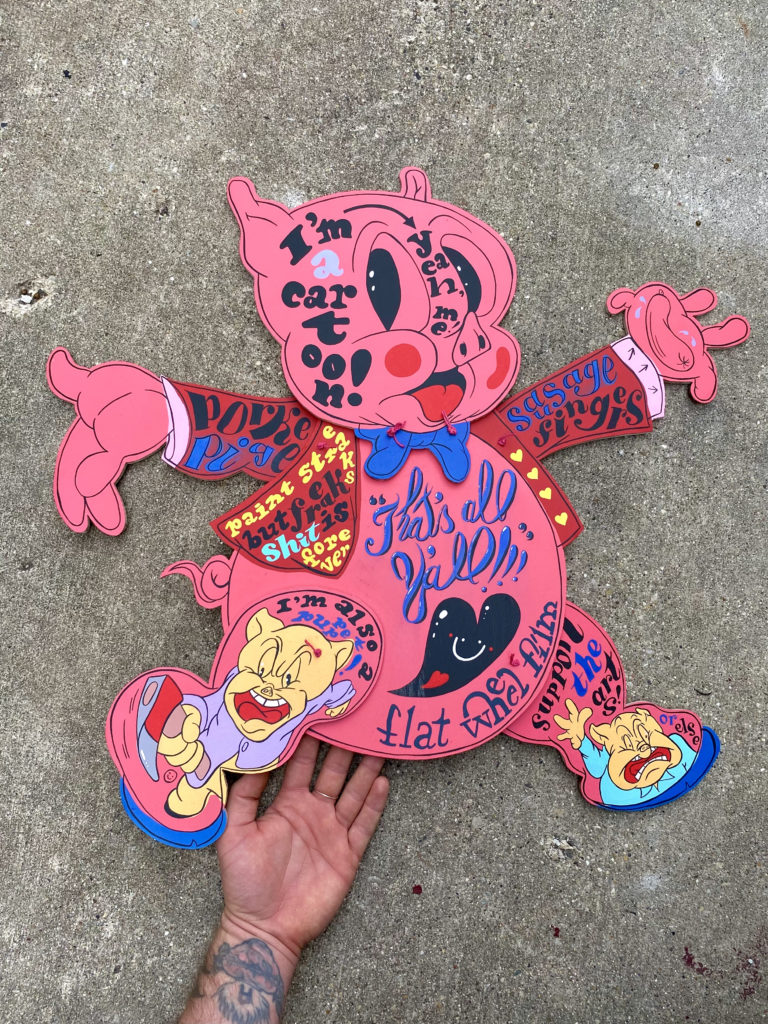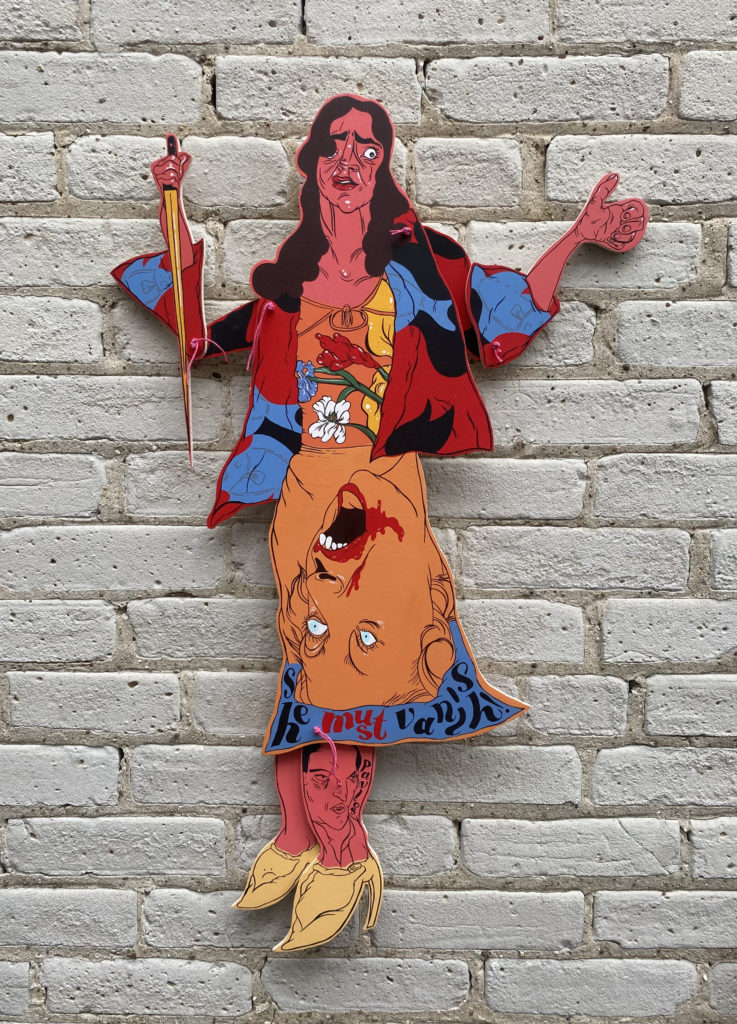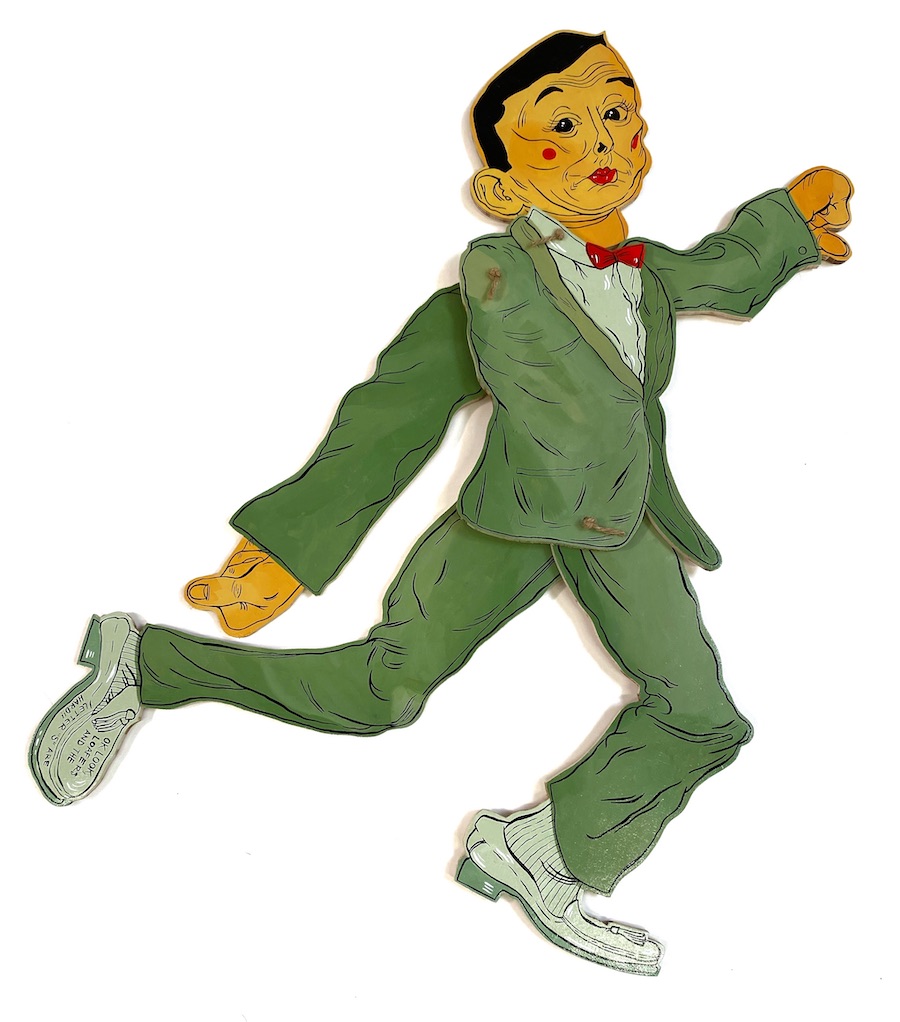
Folio asks artists and curators to gather works made with unexpected materials and adapt them for the printed page. In this issue we speak with LONESOME BILL WALKER, whose woodwork and puppetry explore queerness and its rich strings throughout pop culture.
 I have an affinity for toys because they are beautifully crafted works of art meant to be destroyed, loved to death, and subjected to our freakiest explorations of identity. Toys are our culture’s most explicit encouragement to play and I feel like that’s a big “fuck you” to capitalism, no matter how much it tries to Funko Pop us into debt.
I have an affinity for toys because they are beautifully crafted works of art meant to be destroyed, loved to death, and subjected to our freakiest explorations of identity. Toys are our culture’s most explicit encouragement to play and I feel like that’s a big “fuck you” to capitalism, no matter how much it tries to Funko Pop us into debt.
Puppets in particular have always fascinated me because they encourage us to allow objects to tell our stories. Quite the opposite of the uncanny valley, puppets are meant to look fabricated, and yet evoke such humanity with their use. From modern day Snuff Puppets performers and Miss Pussycat stage shows to the shadow puppets and marionettes of yore, we naturally find ourselves rapt in attention watching a puppet show.
I’m a huge fan of body horror, so naturally I’m drawn to gross-out costumes and characters. It’s almost cliche to say it, but body horror is such a distinct Trans allegory, manifesting our internal worlds as perceivable traits, a sort of physical maximalism. For us Queers, the boogeyman therefore becomes something inherently erotic — society casts Trans people as the ultimate transgressor, making t4t monsterfuckers of us all. When I create my puppets, I look to characters whose fashion and physicalities reclaim horror as gender fuckery at its finest. Pee-wee Herman will always be my muse with his scotch-taped face and garish lipstick, and Grace Jones, made out of nothing but cartilage and sharp angles, draws my attention endlessly. At the end of the day, it’s all about celebrating the sensual world (erotic and other-wise) of Transgender people.
I actually have no formal training as an artist —my background is a hodgepodge of community outreach, manual labour and linguistics studies. My first job was cleaning the machines in an industrial woodshop, where I learned the basics of carpentry, and then later I worked on farms selling produce. I used whatever was laying around to teach myself how to paint so I was using wood scraps and brown paper bags and poster paint.

There was never a shortage of industrial debris on a job site and art stores are prohibitively expensive, so I took home whatever castoff material I could to tinker with after hours. That approach to making art with found and industrial mediums proved to be exactly what my brain needed to make shit uninhibited, and thus was born the wood/paint/hardware holy trinity of my practice.
You can find more of Lonesome Bill’s work at LONESOMEBILL.COM
